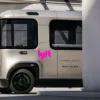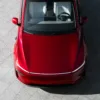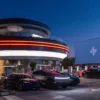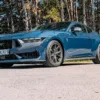From robo-taxis to humanoid robots: how Elon Musk will shift Tesla from the automotive industry to the world of artificial intelligence. So - Tesla will no longer make classic passenger cars in 2030?!
Tesla will no longer make classic passenger cars in 2030?! Tesla has become synonymous with electric vehicles in two decades, but Elon Musk's vision goes beyond steel horses. In recent years, the CEO has repeatedly emphasized that Tesla is not a car company, but a technology and AI giant that will upgrade existing models with autonomy and convert its factories to robot production. Predictions about the disappearance of classic passenger cars may be bold, but the arguments below show why Tesla could indeed stop producing classic cars by 2030.
Recent hints that there will be no more classic passenger car program by 2030
When it's Elon Musk during the presentation of the affordable Tesla Model Y Lite, he casually said "It's just a Model Y", hinting at the company's philosophy: less glitter, the same platform and a significantly lower price. In recent years, Tesla has gradually made existing models cheaper and reduced margins, instead of expanding the model range. At the same time, the company is investing heavily in artificial intelligence, the development of hardware for autonomous driving and humanoid robots. The following paragraphs collect seven reasons why Tesla, as we know it today, will likely outgrow the framework of a classic car manufacturer by 2030.
Tesla will no longer make classic passenger cars in 2030
1. Tesla is a technology company, not an automobile company
Musk emphasizes that Tesla is not a traditional car manufacturer, but an AI company. As early as 2024, he stated that Tesla is not actually an electric vehicle manufacturer, but a technology company that builds artificial intelligence. When the company installed a large touchscreen in the Model S, we motorists got the first “computer on wheels.” Today, Musk claims that the software for self-driving systems is the essence of Tesla’s future – cars are just a platform for this system.
2. Cars as a software platform
Tesla cars have been leaving the factory since 2016 with built-in hardware for autonomous driving – eight cameras, radar, ultrasonic sensors and a powerful computer. The latest versions of the hardware, however, contain only 8 cameras. Regardless of whether the buyer pays for the Full Self-Driving package, his Model 3 or Model Y has the “eyes and brains” for autonomy built in. Musk is thus predicting that Tesla cars will soon act as servers on wheels that collect data and learn, with software functions activated by customers as needed. This opens up a new business logic: software revenue may become more important than sheet metal sales.
3. The Big Data Advantage and the Dojo Supercomputer
More than two million Tesla cars collect images of intersections, unexpected maneuvers, and other events every day and send them to the company’s cloud. Musk claims that this fleet represents the largest fleet of “robots” in the world, and that it is this real-world data that will catapult Tesla into the ranks of AI companies. The data is processed on Tesla’s Dojo supercomputer, which trains neural networks for autonomous driving. Instead of focusing on the next sedan, Tesla is teaching its algorithms to drive better than humans.
4. Software as a Product: FSD Licensing
Musk has already offered that competitors can license Tesla's FSD autonomous driving system for their cars. Such licensing represents a new business model: Tesla becomes a software supplier to other manufacturers. Similar to how Apple generates revenue from software with the App Store, Tesla could earn more from licenses than from vehicle sales in the future. Ford CEO Jim Farley confirmed, among other things, that Ford was considering buying an FSD license, which shows the seriousness of Musk's ambitions. So Tesla will be the brains of the auto industry, which is also why Tesla will no longer make classic passenger cars in 2030.
5. Humanoid robots and the reorientation of production
At the 2022 AI Day, Musk introduced the humanoid robot Optimus and claimed that this product will be more important than cars in the future. In June 2024, he reiterated at a shareholders meeting that “the majority of Tesla’s long-term value will belong to the Optimus robot.” Optimus is supposed to perform repetitive and dangerous tasks, and Musk plans to deploy thousands of such robots in factories and warehouses. If Tesla masters the mass production of humanoid robots, the logical step will be to focus factories on robotics – cars will be just one of the sales programs in comparison, and even that will increasingly go to robotic vehicles. Tesla will no longer make classic passenger cars in 2030, a serious projection given the fact that Tesla no longer presents new car models. Nor does it introduce the latest technologies.
6. Robotaxis, Cybercab and Robovan
The future of mobility is not new passenger car models, but autonomous taxis. In June 2025, Tesla launched a pilot fleet of about ten Model Y vehicles in Austin, which for the first time transported customers without a driver for a symbolic $ 4.20 per trip. Analysts believe that this will allow Tesla to sell fewer cars but make more profit, as the same cars will make more trips. At the “We, Robot” event in October 2024, Musk unveiled the Cybercab prototype – an autonomous robotaxi vehicle without pedals and a steering wheel, with aerodynamic “gull” doors. The vehicle is expected to cost under $ 30,000 (about € 27,000) and is expected to cost about $ 0.20 per mile of operation. At the same event, he also revealed the Robovan, an electric autonomous vehicle the size of a small bus designed to transport up to 20 passengers and cargo; the vehicle has no steering wheel and is designed for urban centers. These models show that Tesla will introduce new products primarily in the autonomous transportation segment, not as classic passenger cars. This is also why we believe that Tesla will have classic passenger cars by 2030.
7. Existing models as a bridge: Model Y, Model 3, and the affordable Model Y Lite
Instead of a wide range of models, Tesla is adapting and cheapening existing models. Musk buried the “Model 2” with the words “It's just a Model Y”. The new Model Y Lite has a single motor with 220 kW (299 hp) and 420 Nm (310 lb-ft) of torque, which is enough for an acceleration of 0–100 km/h in 6.9 seconds and a top speed of 217 km/h (135 mph). It is powered by a roughly 50 kWh LFP battery, which allows a real range of around 350 km, and charging at a supercharger takes 175 kW; from 10 to 80 % it can be charged in about 25 minutes. Tesla is therefore not following the trends of 800-volt systems and “mega” charging; its “espresso pit-stop” approach (fast charging, not long coffee) shows that reliability is more important to users than absolute power. The Model Y Lite will cost around $35,000 (around €32,000) and has a stripped-down interior, fewer battery cells, and only basic equipment. This shows that Tesla will be using the existing Model 3/Model Y platform to drive the transition to an autonomous future, while there are no new classic models in sight.
Conclusion: Tesla without classic passenger cars by 2030
If we add up the facts, the picture becomes clear. Tesla positions itself as an AI and software provider; its cars are data-gathering platforms that will feed supercomputers; the company is already licensing its FSD system to competitors; it is investing billions in the development of humanoid robots and predicts that most of the company’s value will come from robotics. The Tesla Diner also suggests that Tesla, with a network of open charging stations for all manufacturers, would go for something else – the MacDonalds of mobility. At the same time, it is developing autonomous robotaxis such as the Cybercab and Robovan, while improving and cheapening existing models for the transition to this new era. Traditional automotive journalists may be waiting for a new Tesla sedan, but Musk clearly hints that the company’s future lies in AI, autonomous transportation and robotics. Classic passenger cars will be just a relic of the beginnings in Tesla’s story in 2030 – a platform that enabled the leap into a whole new industrial revolution.





